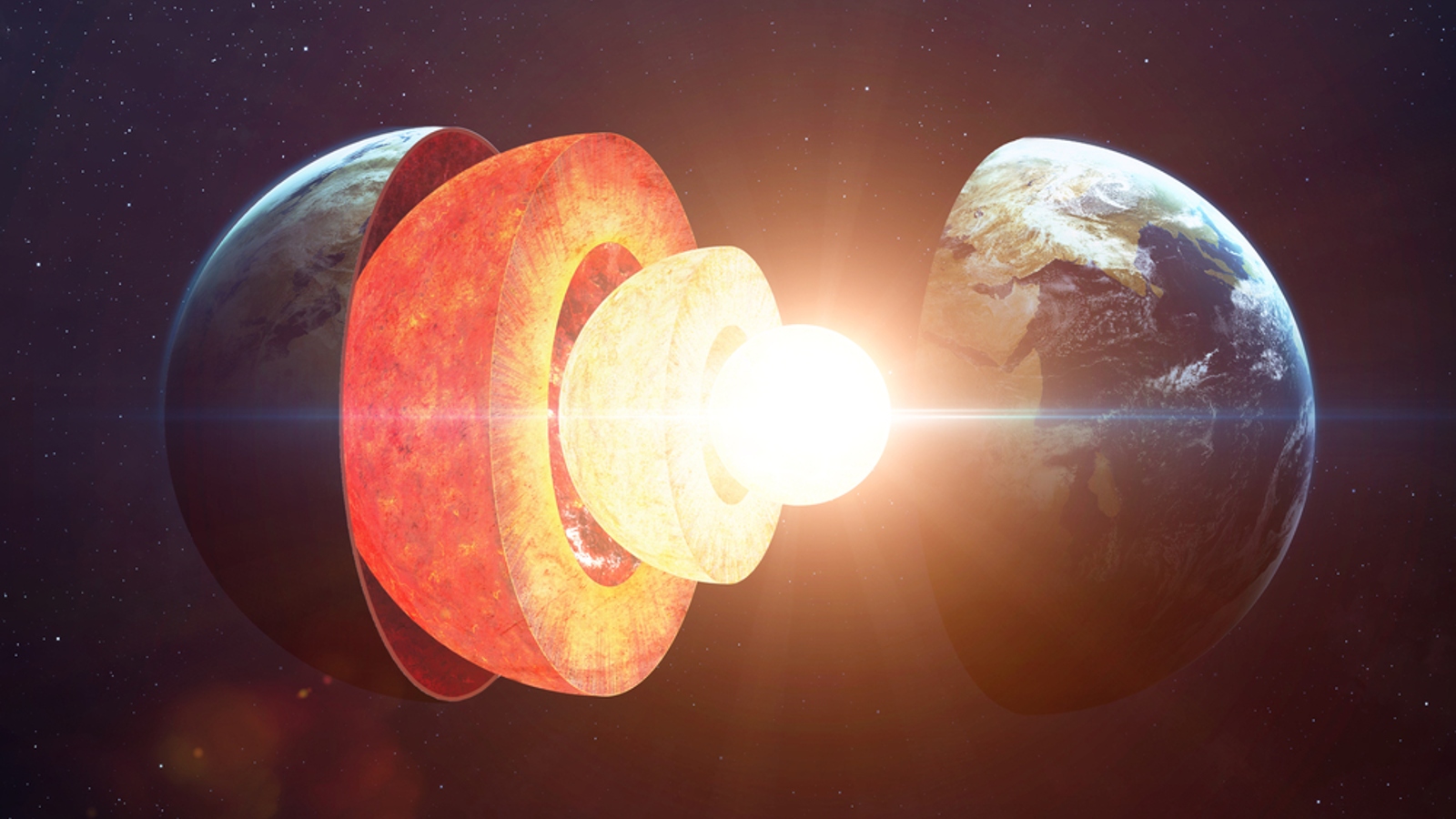Earth's rotating inner core is starting to slow down — and it could alter the length of our days
A new study confirms that Earth's inner core has been rotating more slowly than usual since 2010. This mysterious "backtracking" could also end up slightly altering the planet's overall rotation, lengthening our days.

The heart of our planet has been spinning unusually slowly for the past 14 years, new research confirms. And if this mysterious trend continues, it could potentially lengthen Earth's days — though the effects would likely be imperceptible to us.
Earth's inner core is a roughly moon-size chunk of solid iron and nickel that lies more than 3,000 miles (4,800 kilometers) below our feet. It is surrounded by the outer core — a superhot layer of molten metals similar to those in the inner core — which is surrounded by a more solid sea of molten rock, known as the mantle, and the crust. Although the entire planet rotates, the inner core can spin at a slightly different speed as the mantle and crust due to the viscosity of the outer core.
Since scientists started mapping Earth's inner layers with detailed seismic activity records around 40 years ago, the inner core has rotated slightly faster than the mantle and the crust. But in a new study, published June 12 in the journal Nature, researchers found that since 2010, the inner core has been slowing down and is now rotating a bit more slowly than our planet's outer layers.
"When I first saw the seismograms that hinted at this change, I was stumped," John Vidale, a seismologist at the University of Southern California, Dornsife, said in a statement. "But when we found two dozen more observations signaling the same pattern, the result was inescapable."
If the inner core's rotation continues to decelerate, its gravitational pull could eventually cause the outer layers of our planet to spin a little more slowly, altering the length of our days the researchers wrote.
However, any potential change would be on the order of thousandths of a second, which would be "very hard to notice," Vidale said. As a result, we would likely not have to change our clocks or calendars to adjust for this difference, especially if it were only a temporary change.
Related: 'New hidden world' discovered in Earth's inner core
Sign up for the Live Science daily newsletter now
Get the world’s most fascinating discoveries delivered straight to your inbox.

This is not the first time scientists have suggested that Earth's inner core is slowing down. This phenomenon, known as "backtracking," has been debated for around a decade but has been very hard to prove.
In the new study, researchers analyzed data from more than 100 repeating earthquakes — seismic events that occur repeatedly at the same location — along a tectonic plate boundary in the South Sandwich Islands in the South Atlantic Ocean between 1991 and 2023.
Each earthquake allowed scientists to map the core's position relative to the mantle and by comparing these measurements, the team was able to see how the inner core's rotation rate changed over time.
The new study is the "most convincing" evidence so far that backtracking has been happening, Vidale said.
It is currently unclear why the inner core is backtracking, but it is likely caused by either "the churning of the liquid iron outer core that surrounds it" or "gravitational tugs from the dense regions of the overlying rocky mantle," the researchers wrote.
It is also unclear how frequent backtracking is. It is possible that the inner core's spin is constantly accelerating and decelerating, but these changes likely happen over decades or longer. Therefore, longer data sets are needed to infer anything about long-term trends.
The inner core remains one of the most mysterious of Earth's hidden layers. But in recent years, new technologies are allowing researchers to learn more about the inner core, including that it is slightly lopsided, that it is softer than expected, that it potentially wobbles off Earth's axis and that it has a separate innermost core.
The study authors will continue to analyze seismic data to learn more about the heart of our planet and how it changes over time.
"The dance of the inner core might be even more lively than we know," Vidale said.

Harry is a U.K.-based senior staff writer at Live Science. He studied marine biology at the University of Exeter before training to become a journalist. He covers a wide range of topics including space exploration, planetary science, space weather, climate change, animal behavior and paleontology. His recent work on the solar maximum won "best space submission" at the 2024 Aerospace Media Awards and was shortlisted in the "top scoop" category at the NCTJ Awards for Excellence in 2023. He also writes Live Science's weekly Earth from space series.









